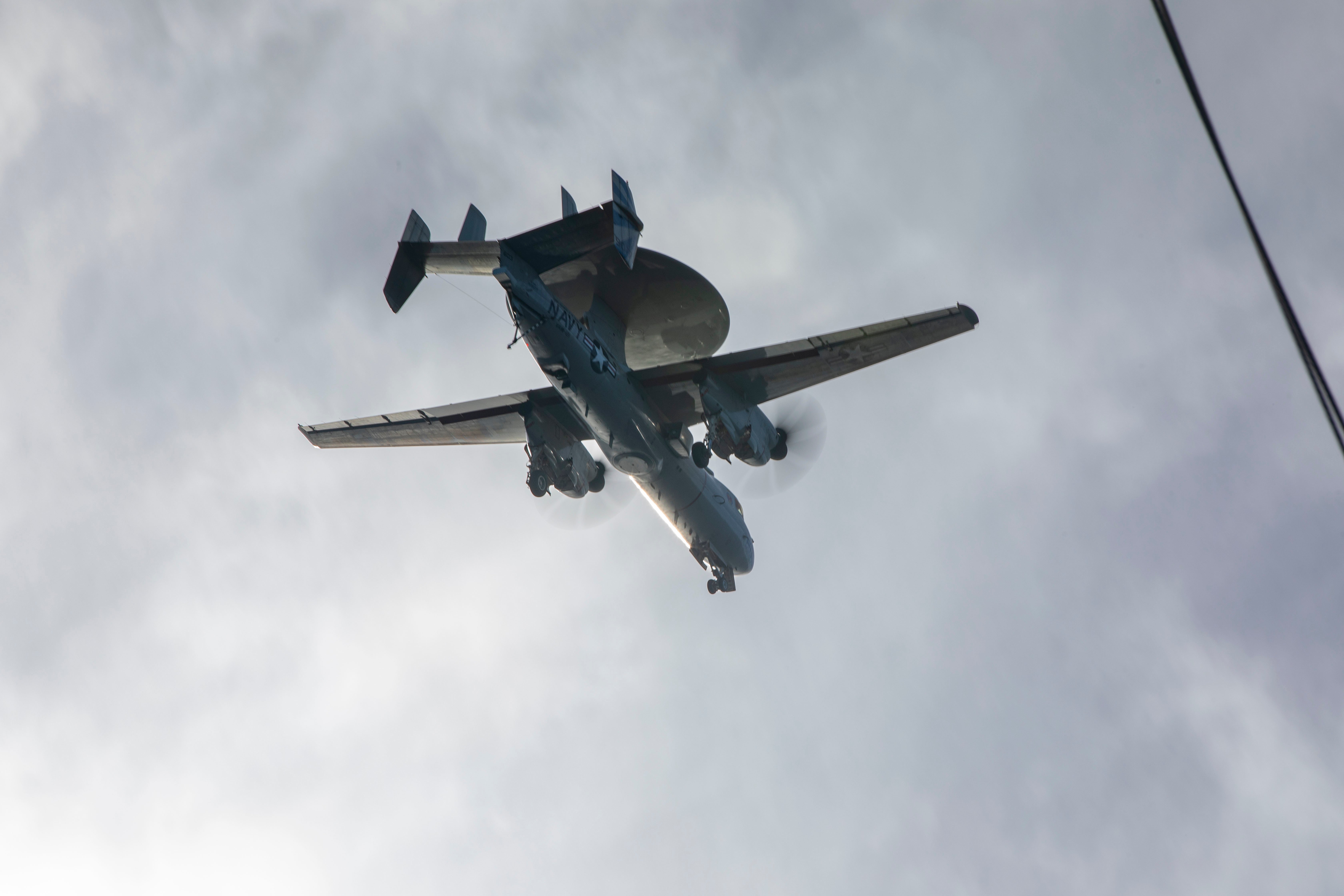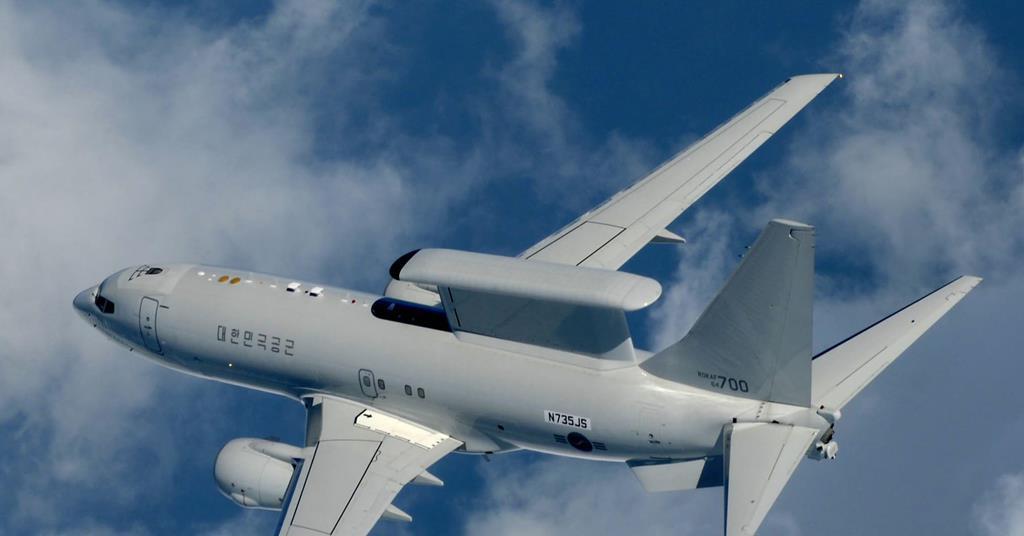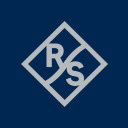This also makes attempts to compare with the Northrop Grumman MESA fitted to the E-7 rather tricksy, because there is little we know for certain with that either. The operating band (IEEE L-band) is known, as is the basic frequency range. We know that it was developed as an Electronically Scanned Array. We also know that the arrangement of T/R modules in the radome 'top hat' is such that 360 degree coverage is provided. What kind of T/R modules are being used, how many, what their individual and/or collective RF power out is, etc. These are all things we do not know.
Defence platforms are often a function of how much money and resources are thrown at them, as much as they are size, number of weapons, man power etc.
E7 seems to be selected by pretty much all the top tier technology operators, and seems to have a lot of money being thrown at it and projects around it, by some of the largest defence spenders on the planet, who are dealing with the greatest threats. It is a maturing program, of decades, and combat proven. Grumman has a fair bit of radar experience and has access to a lot of the US technology tree in this area.
Not sure if the services have added ridiculous requirement changes from the designs already in service with Australia, Turkey and S. Korea, or if Boeing is trying to pad the invoice. Honestly I suspect it is at least a bit of both.
Established in 2022, the Wedgetail Trilateral Agreement is a commitment of the RAF, RAAF, and USAF to work together under an E-7 'Joint Vision Statement'.

ukdefencejournal.org.uk
The newer aircraft and those AUKUS nations are very different aircraft configurations from the original E7 spec. Consoles, software, processing, coms are all very, very different. Its essentially a fork in the E7 development. The US kind of is using the basic E7 platform, but is supersizing, modernising every aspect of it (which was already very good and very capable), which UK is incorporating many aspects, and Australia is updating many aspects, the 3 seek commonality. No one else is in that grouping. The consoles now have two screens instead of one, they are already in Australian aircraft and US and UK ones are following suit. Technology sharing between those partners is very easy. Turkey on the other hand may not be able to acquire those upgrades, and SK may not be interested in those upgrades. Particularly because both operate small fleets, and significant upgrades right now, would see that fleet essentially become grounded.
The US can sort of afford this, because the existing E7 is there as a fall back. If ambitious software plans don't quite workout, then the existing software will do the job. But the US very, very much wants advanced features. Ukraine operations highlight how far the E3 is from being able to work in the modern battlefield, and how the E7 is absolutely an excellent fit.
E-2s are very much their own thing. SK and JP has E2s. They just bought more. But they aren't exactly cheap either. They are possibly more suited for ocean work, operating from short island/mountain fields, that things like E3's or E767 would be difficult to operate out of. But the 737 is better in that regard than E3 or 767s..
The State Department issued a notification of the potential sale of E-2D Advanced Hawkeye airborne early warning aircraft to Japan, the Defense Security Cooperation Agency announced today. The deal is for as many as 5 E-2D aircraft, six Tactical Data Link radio systems, 12 engines, and other...

news.usni.org
Oh it would be fun to be on a E2 flying over Canadian artic land for many hours, in a E2, as a job.. I would be talking to E2 operators and users about that. Israel and Singapore can explain why even with conscription, finding people willing to do that can be hard. Long hummers can be uncomfortable. Particularly if allies are microwaving toasties wearing fluffy slippers while playing texas holdem on longer missions. Perhaps with Canada's drive for social liberalisim, it will attract more people with S & M fetishes into the military.
Again Australia operates Tritons in that space. Each piece of equipment is kind a designed around different needs. It is at sea search and rescue and coordination required? E7 can and do operate at sea.. But surface scanning large sections of ocean and ocean air, are probably better done by triton. Particularly if there aren't any other manned platforms around in a remote space.
For areas where you have a lot going on the E7 with just a few other assets can provide real presence.

IMO Canada considering the E7 is also part of Canada considering AUKUS type membership. Pillar 2 or what ever they want to call it. There isn't really a huge security concern with Canada, but there are definitely world view, and defence spending issues. I guess it also depends on what sort of capability they think they will need, and where.
IMO as rich middle power, in the near Austro-Anglo-American alliance club, E7 would be the benchmark. And I would be following where the Americans are throwing mega bucks at a platform, particularly when its cheap to operate, and affordable to buy. Americans are pretty much kings of software integration, and on a platform where integration is everything, would seem like a pretty easy fit.
After all why buy F-35's if you are going to go with non-integrated command and control platforms, vectoring 5th gen aircraft with morse code coordinates pilots plot on paper maps.
But I am going to hose myself off and keep out of this discussion. Dealing with Canadians, I feel all sticky from maple syrup..






